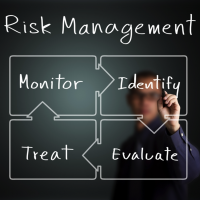Getting Started with Risk-Based Testing

In most business situations, the amount of risk involved is a significant factor of whether stakeholders will make an investment and what the potential success will bring. However, many organizations prefer to be as low-risk as possible to ensure that they are getting the results they expect while also innovating at a comfortable pace. For software development, risk-based testing is becoming a major necessity to guarantee that the user is getting the best experience possible without encountering too many issues. As this aspect becomes more important to the prosperity of app projects, quality assurance teams will need to effectively gauge the products based on the potential risk they bring.
Prioritize for Better User Experience
For apps of all types, success lies in how well it functions for the user, effective defect management, and the minimal number of issues that may appear. Gamasutra contributor Lindsay Lauters Miller noted that risk-based QA software testing accounts for how likely it is that an individual will encounter issues and what effect the problems will have. After all, some vulnerabilities may make it impossible for people to use the application at all or cause users to flood the IT department with tickets related to their needs. In order to resolve these concerns, they must first be prioritized in terms of which item will be the most harmful to those that do not need to be addressed right away.
"Risk helps QA prioritize what should be covered first, and what should be covered at all," Lauters Miller stated. "If done well, using risk when planning how, when, and where to test can substantially reduce the impact of not being able to test everything all the time while keeping the test budget lean."
Understand Its Limits and Capabilities
Many organizations may assume that risk-based testing will simply help them eradicate all of the potential threats facing the value of their applications. However, this is not the case. The Guardian's Jonathan Hare-Winton noted that while a risk-based approach can help inform a business's operations, it will not be foolproof or fully remove risk. For this reason, testing metrics must be continually monitored and run through QA processes to ensure that the validity and value of the information is solid.
"It must be remembered, however, just as with all other approaches to testing, it is in essence a risk-based approach, and cannot be considered foolproof," Hare-Winton wrote. "The whole endeavor is steered towards reducing risk when it comes to releasing the app to production, however that does mean it completely eradicates risk."
Use Best Practices for Risk-Based Testing
As with all other projects, risk-based testing will encounter challenges that must be overcome. But by following industry best practices, QA teams will be able to use this method effectively. A Cognizant white paper noted that by mathematically figuring out the probability and impact of failure, organizations will have a better picture of what they're up against. In order to complete proper risk assessment, historical data must be appropriately utilized, QA personnel must have the expertise to test the software, and collaboration should be encouraged throughout the process. Traditionally, communication in app development has been very siloed, but with risk-based testing, it's better for subject matter experts, business users, and QA teams to work together to decide the best way to test the software. This will improve the quality of the product and lower overall risk.
"Business analysts and the test team [must] communicate effectively so they have a good, mutual understanding of the scope of the test suite," the white paper stated. "Often, business analysts and testers have different priorities and time constraints, and clear communication is required to ensure both sides can properly coordinate the test process."

